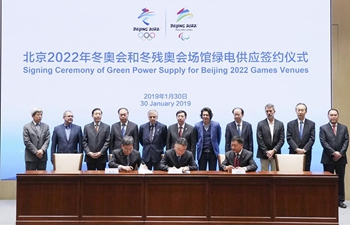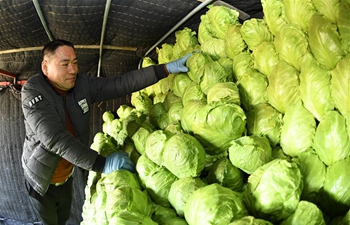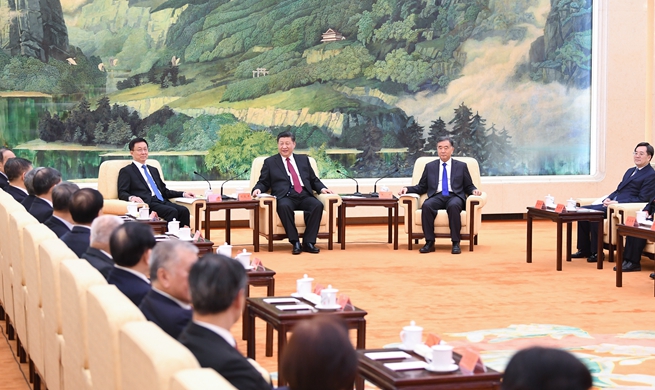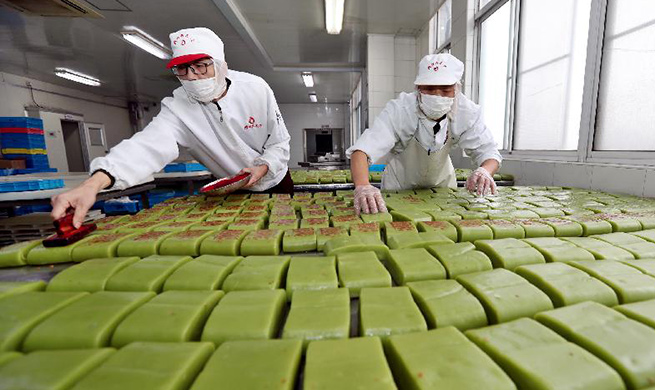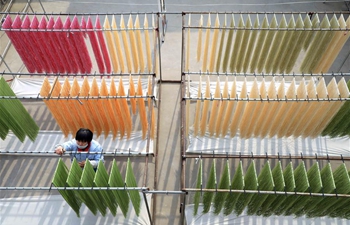WUHAN, Jan. 31 (Xinhua) -- Peter Bennett and his Chinese partners are working on the latest laser imaging technology, hoping to bring a more energy-efficient and environment-friendly future for the printing sector.
"With this technology, the printing process will consume less electricity, produce less wastewater and exhaust gas and recycle printing plates more efficiently compared with the current technology," the British printing researcher explained.
The new technology is called "miracle plate technology," or ultrafast laser imaging technology. Trial production of printing plates will start later this year in China with the use of the technology.
However, such a big achievement would be impossible without Bennett's collaboration with his Chinese colleagues as well as the policy and financial support from the Chinese government and institutions.
Bennett earned a PhD in chemistry at Oxford University. He joined the printing plate manufacturing company Horsell Graphics in 1987 and after a 1998 acquisition, he left as UK R&D director for Kodak's Graphic Arts joint venture in 2002 to pursue an MBA and establish his worldwide consulting business.
His business in China began in 2006 when he was hired as a printing technology consultant by one of the world's top press manufacturers to support a private company in Zhengzhou, capital of the central Henan Province, in developing a Computer To Plate product.
In 2007, he applied for an EU-funded research project, enabling him to do research on ultrafast laser printing technology in collaboration with the laser lab at Liverpool University, where he met Liu Dun, a Chinese PhD candidate in laser application. Liu has been a key research partner of Bennett's ever since.
"Our research has achieved interdisciplinary integration. This is quite necessary for the development of disruptive technologies," Bennett said.
In 2010, Bennett encountered financing difficulty after his research fund ran out. He and Liu decided to go to China where the Computer To Plate market was still in a steep growth phase.
"Liu told me that China's printing industry was expanding quickly. He invited me to come to China, where we might create wonders," Bennett said.
They were drawn to Wuhan, capital of central China's Hubei Province, where the high-tech development zone "Optics Valley of China" is located. The city provides financial support and living subsidies for high-level talent, and the industrial concentration of the city is a key attraction.
They set up a Sino-Britain ultrafast laser processing center with Hubei Technology University, where they also teach. Liu registered Wuhan Jindun Laser Technology Co., Ltd. and Bennett works as the company's research and development director.
"I feel very lucky to participate in the research and development of this disruptive technology," said Liu. "Without international technological cooperation, I might just be working as a teacher or researcher at a university."
Compared with investors in some developed economies, Chinese investors are more open to new technologies and their curiosity is strong, according to Bennett.
In Wuhan, the two would often attend startup events and lectures given by entrepreneurs and professors, which inspired them a lot.
"As a new round of technological and industrial revolutions advance, the printing sector faces an upgrade," said Bennett. "The green, environment-friendly and sustainable technology we have developed will reduce the chemical pollution of the printing process and thus it has broad prospects."
Confident as he is, Bennett still worries a bit about the marketing of his future products. "The new technology will change the current production model, increase costs and cut labor in the short term, but it is an innovation that will benefit new generations."
He said the team members are having their hardware prototype designed and built by a company in Germany. And during the traditional Chinese Spring Festival, he will go to Germany to check on the progress.
Bennett and Liu have found new investors in eastern China's booming city of Shenzhen, where the production of their green printing plates will take place.
"A trial production of new printing plates and plate setters will be launched in July. And if it goes smoothly, large-scale production will be realized in 2020," said Bennett.
Bennett was awarded a certificate for his contribution to China's development by the State Administration of Foreign Experts Affairs last year. He is applying for a foreigner's permanent residence identity card in China.
"My future is in China, a country that deeply attracts me with its openness and inclusiveness. I hope to create a more environment-friendly future with our miracle printing technology," he said.







